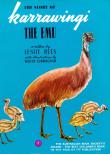 4306364675318062717.jpg
4306364675318062717.jpg
 4306364675318062717.jpg
4306364675318062717.jpg
'The Children’s Book Council of Australia (CBCA) administers the oldest national prize for children’s literature in Australia. Each year, the CBCA confers “Book of the Year” awards to literature for young people in five categories: Older Readers, Younger Readers, Early Childhood, Picture Books and Information Books. In recent years the Picture Book category has emerged as a highly visible space within which the CBCA can contest discourses of cultural marginalization which construct Australian (‘colonial’) literature as inferior or adjunct to the major Anglophone literary traditions, and children’s literature as lesser than its adult counterpart. The CBCA has moved from asserting its authority by withholding judgment in the award’s early years towards asserting expertise via overtly politicized selections in the twenty-first century. Reading across the CBCA’s selections of picture books allows for insights into wider trends in Australian children’s literature and culture, and suggests a conscious engagement with social as well as literary values on the part of the CBCA in the twenty-first century.'
'The Children’s Book Council of Australia (CBCA) administers the oldest national prize for children’s literature in Australia. Each year, the CBCA confers “Book of the Year” awards to literature for young people in five categories: Older Readers, Younger Readers, Early Childhood, Picture Books and Information Books. In recent years the Picture Book category has emerged as a highly visible space within which the CBCA can contest discourses of cultural marginalization which construct Australian (‘colonial’) literature as inferior or adjunct to the major Anglophone literary traditions, and children’s literature as lesser than its adult counterpart. The CBCA has moved from asserting its authority by withholding judgment in the award’s early years towards asserting expertise via overtly politicized selections in the twenty-first century. Reading across the CBCA’s selections of picture books allows for insights into wider trends in Australian children’s literature and culture, and suggests a conscious engagement with social as well as literary values on the part of the CBCA in the twenty-first century.'